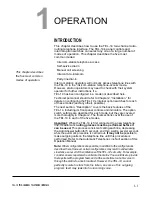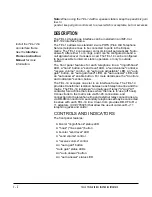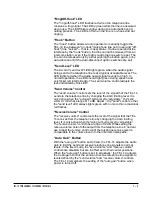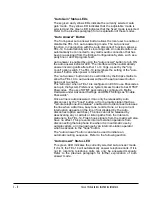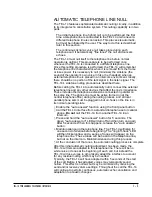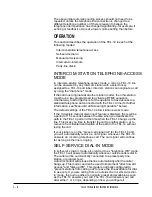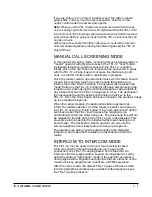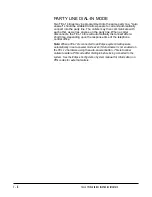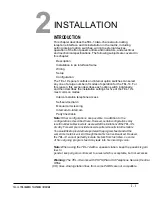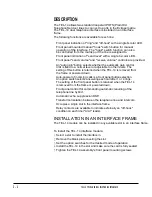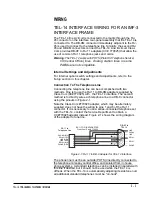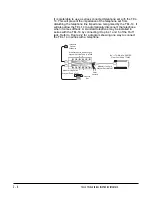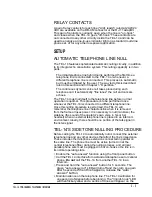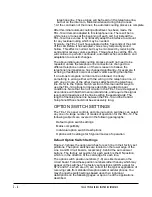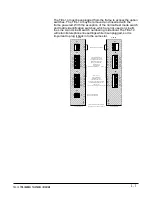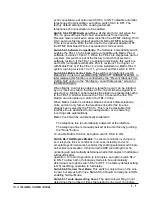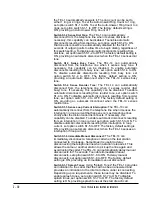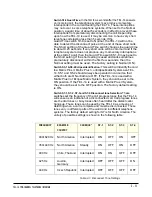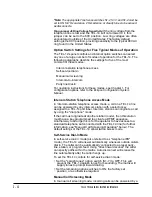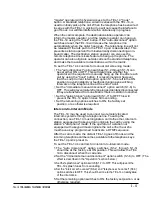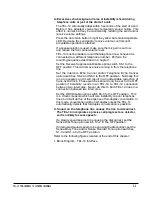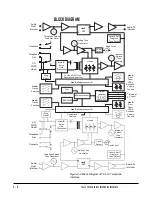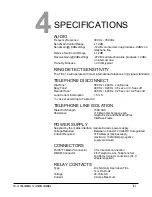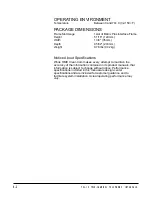
2- 6
TEL-14 TWO-CHANNEL TELEPHONE INTERFACE
telephone line. These tones will be heard on the telephone line,
but not on the intercom. Maintain silence during this process.
5.
At the conclusion of the tones, the automatic nulling process is complete.
After this initial automatic nulling adjustment has been made, the
TEL-14 will remain adapted to this telephone line. There will be no
white noise or tones at the beginning of each call, but instead the
TEL-14 will use voices to dynamically adapt the interface to account
for any residual nulling which may be needed.
Typically, the TEL-14 will have adapted within 5 seconds of the start
of the call. Before it has adapted, voices may temporarily sound
hollow. This effect is normal, but may be minimized by reducing the
send and/or receive volume settings. Throughout the call the TEL-14
will continue to perform continuous, automatic echo cancellation and
adaptation to acoustic changes.
The above initial automatic nulling process should not need to be
repeated, unless the telephone line connection is changed to a
different telephone number or if there is reason to believe the
telephone line impedance has changed significantly--for example, if
echoing or feedback occurs at a lower volume setting than before.
If an almost complete null cannot be obtained, it is likely
something is wrong either with the wiring in the telephone line, or
with one or more of the other devices attached to the telephone
line. Refer to the
“Option Switch” section of this manual for ways to
use the TEL-14 options to improve its ability to adapt to poor
conditions. Note that the null circuits in the TEL-14 are designed in
accordance with North American standards, and require the signal
levels and impedance of the line be within these standards. The
length of the telephone line between the TEL-14 and the Central
Telephone Office should not be excessively long.
OPTION SWITCH SETTINGS
The TEL-14's panel controls and internal option switches can select
any one of a large number of modes of operation for the TEL-14. The
following subjects are covered in the following paragraphs:
•
Default option switch settings
•
Matrix compatibility
•
Individual option switch descriptions
•
Option switch settings for 5 typical modes of operation
Default Option Switch Settings
Figure 2-3 shows the option switches for each line in their factory set
positions. The option switches are located on the lower edge of the
Line A and B circuit boards, respectively, behind the auto answer
buttons. The factory set position for each switch is the ON position,
which is in the direction of the card edge for each line.
The option switch position numbers (1-8) are silkscreened on the
circuit board. Follow these position numbers rather than any which may
appear on the switches. The factory set positions (all ON except for
S7-2 and S7-4 which are off ) are correct for the typical application of
receiving calls from standard telephone sets or cellular phones. You
may change the switch settings based upon their individual
descriptions on the following pages, or upon one of the applications
described.
Summary of Contents for ECLIPSE TEL-14
Page 6: ......


